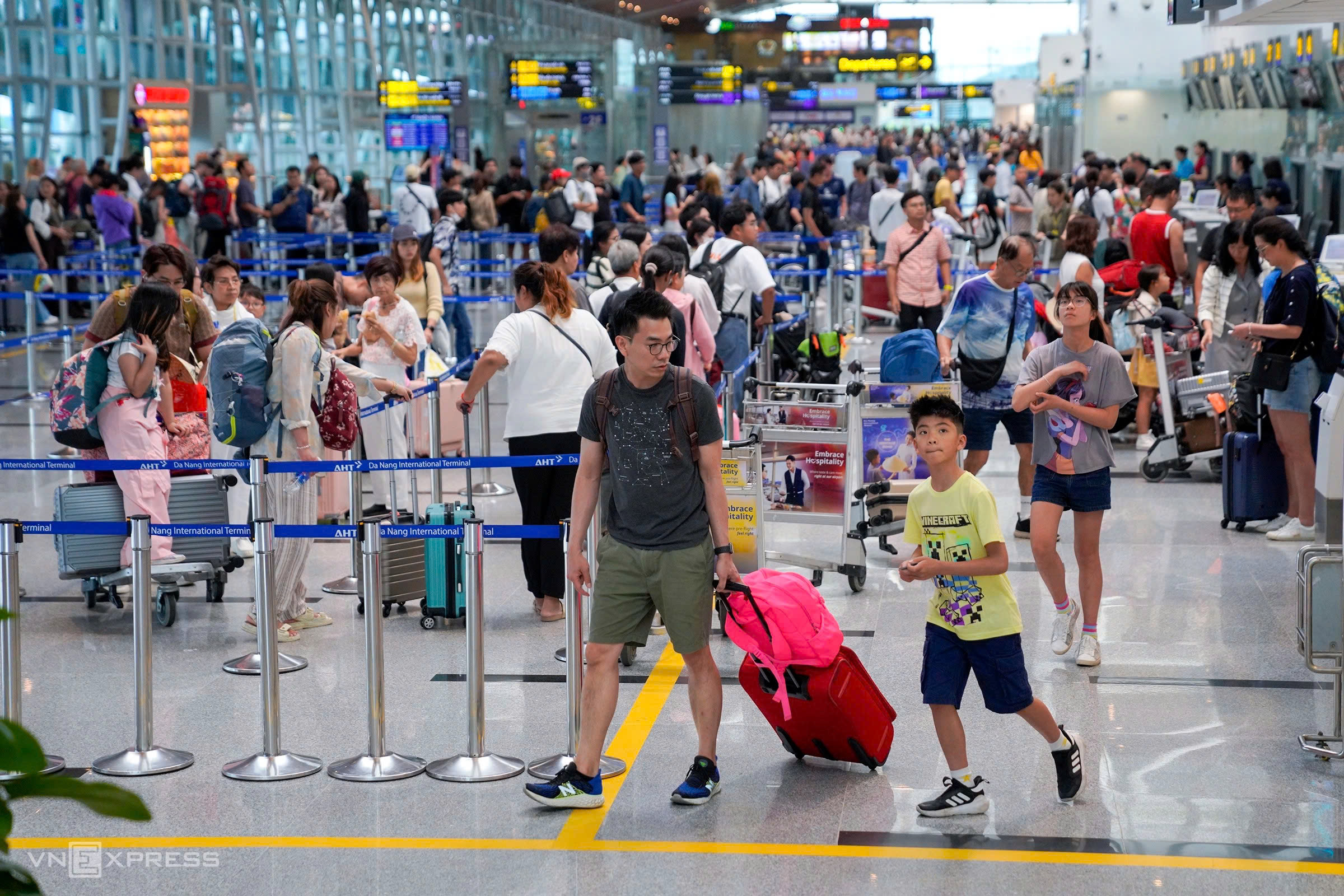The Da Nang (DAD) - Hanoi (HAN) route debuted in the top 10 busiest domestic air routes worldwide, ranking 8th, according to the July report from the Official Airline Guide (OAG).
The ranking is based on seat capacity, with this route recording a nearly 10% growth compared to the same period last year.
 |
Passengers at Da Nang Airport in early 4/2025. Photo: Nguyen Dong |
Passengers at Da Nang Airport in early 4/2025. Photo: Nguyen Dong
This is one of the highest growth rates in the top 10, second only to Saudi Arabia's Jeddah (JED) - Riyadh (RUH) route (up 16%).
This growth reflects Da Nang's appeal as a top tourist destination and Hanoi's central role in connecting key economic regions in central Vietnam.
Road and rail travel between Da Nang and Hanoi takes 14 to 17 hours, making air travel the most time-efficient option. Dozens of flights operate daily between Da Nang and Hanoi, offered by airlines such as Vietnam Airlines, Vietjet Air, and Bamboo Airways. The high frequency allows passengers flexible flight choices, with prices typically ranging from 800,000 to 1,500,000 VND per trip.
The Hanoi (HAN) - Ho Chi Minh City (SGN) route, connecting Vietnam’s two largest economic and political centers, remains one of the world's busiest domestic air routes, holding steady at third place.
Despite a slight 1% decrease in seat capacity compared to the same period in 2024, this route remains the backbone of Vietnam's domestic flight network, vital for trade, tourism, and economic connectivity.
This route ranks just behind two bustling routes: South Korea's Jeju (CJU) - Seoul (GMP) (with 1.17 million seats) and Japan's Sapporo (CTS) - Tokyo (HND).
Maintaining a top ranking indicates consistently high travel demand between Hanoi and Ho Chi Minh City.
The OAG report also provides a global aviation market overview. While Asian routes continue to dominate the domestic rankings, other regions show significant shifts. India's Mumbai (BOM) - Delhi (DEL) route saw the largest capacity drop, down 9%, falling to 9th place.
In the international market, the Asia-Pacific region continues to dominate, holding seven of the 10 busiest routes. Airports such as Seoul Incheon (ICN), Hong Kong (HKG), and Singapore Changi (SIN) each appear twice, highlighting their roles as major global aviation hubs.
The OAG compiled this ranking by calculating scheduled seat capacity on two-way flights during July 2025, using data from its Schedules Analyser tool.
Tuan Anh (From OAG)












